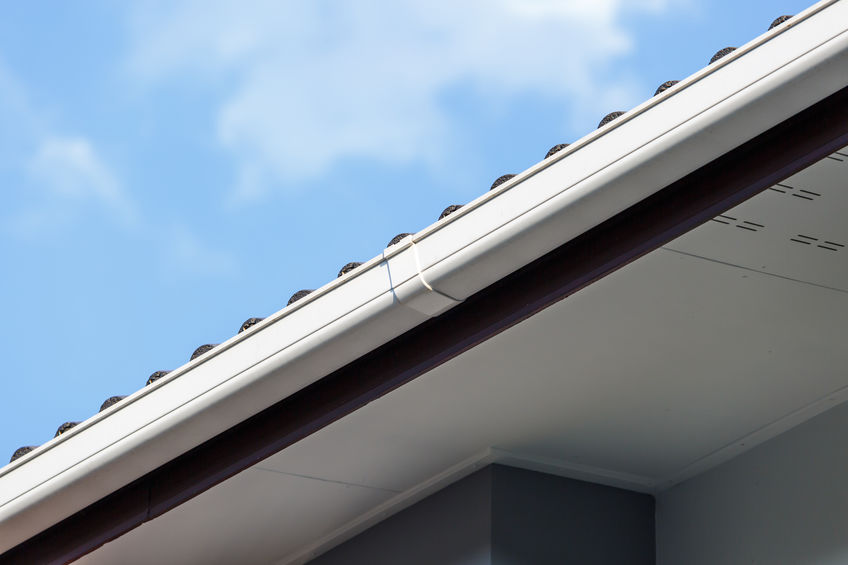
Different Types of Gutters
- Fascia Gutters
Fascia gutters are often installed in homes that do not have a fascia board installed over the rafter tails. They assume the function of a fascia board by covering the edge of the rafter tails, hiding them from view. They act as a protective layer around the edge of the roof that block the impact of rain or strong winds from entering the home.
- K-Style Gutters
Also referred to as ogee gutters, these are some of the most popular gutters used. K-style gutters get their name from the Sheet Metal and Air Conditioning Contractor’s National Association (SMACNA), where K is number eleven in the alphabetical listing of the twelve most common types of gutters. Their unique material and design make them effective during heavy downpours, as they are highly durable.
- European Gutters
European gutter systems are crafted from copper and other natural weathering metals. They have been used over the past years to fabricate downspouts and gutters. Their gutter beads that turn to the outside of the gutter distinguish them from other gutters.
- Half-Round Gutters
This type of gutter is half-cylindrical with the open side facing the roof. Since half-round gutters lack a flat back, gutter hangers are placed underneath to hold them up. The only issue with these gutters is that they are not ideal for heavy rains or snow since debris in the gutter or the slightest leveling problem can cause overflowing.
Factors that Determine the Best Gutter
- Gutter Material
The type of material for your gutter determines its durability and level of resistance to stains and rust. Your six primary choices of gutter material include aluminum, steel, copper, vinyl, zinc, and galvalume gutters. Aluminum is a corrosion-resistant material that comes in a wide variety of colors and is less costly compared to other options. Galvanized steel gutters are coated with a layer of zinc. Although they are strong and durable, they are prone to rust.
Regular inspection and cleaning of galvanized steel gutters can help prevent premature rusting and clogging. Copper gutters do not last longer than aluminum gutters but can offer short term advantages if installed properly. Zinc gutters require no painting and usually cost more because they offer twice the lifespan of aluminum. Vinyl gutters are a low budget alternative that is easier to install, lightweight, and offer pre-cut sections that allow for customizability.
- Gutter Construction
All types of gutters can be either sectional or seamless. Sectional gutters are often sold in sections that are often 10 ft. long. Snap-in-place connectors running to the downspouts join them together. The major downside of sectional gutters is that the seams can leak over time reducing their effectiveness in protecting your siding and foundation. Seamless gutters are more preferable as they do not have any seams. They only are connected at inside and outside corners. They are also made of quality materials such as galvanized steel and aluminum, which are often extruded to custom lengths using a portable gutter machine.
- Size and Color
The width across the top of the gutter can be either 5 inches or 6 inches wide. Gutters with larger width may be effective at collecting the runoffs during heavy rains and snowy weather. You might also consider installing larger outlets as they prevent the chances of clogging. The key to determining the correct size is to estimate the amount of water a gutter can carry when it is working at maximum capacity. Although the width of your gutter is important, it is also important to consider the size of your downspout as it influences the rate at which your gutter can operate efficiently. The color selection may vary depending on the visual effect you wish to create around your house.
The best gutter to have in your home is one that works quickly and efficiently to move water away from your foundation. It protects your siding from water damage caused by heavy rains and snow. Seamless gutters are available in aluminum, have no length limit and are highly durable. They preserve the smooth horizontals of your roof edges making them the best type of gutters to have in your home.
